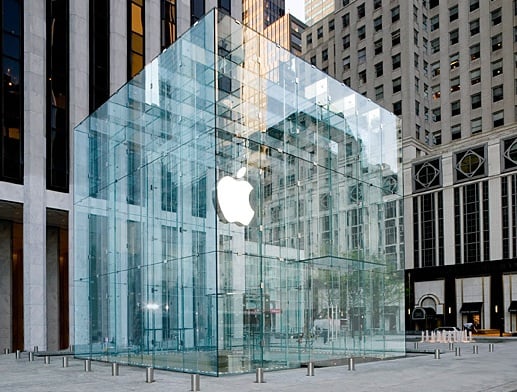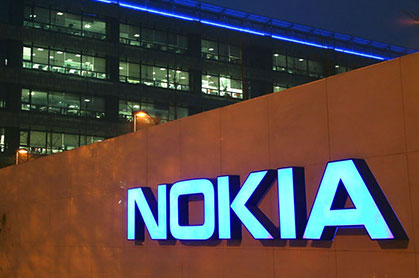Original URL: https://www.theregister.com/2014/05/17/microsoft_swallows_nokia_to_take_on_apple/
So you reckon Nokia-wielding Microsoft can't beat off Apple?
Wrong. It could. Look at history – and Redmond ought to swot up, too
Posted in Channel, 17th May 2014 10:06 GMT
Analysis Microsoft isn't used to being the underdog, but the company which owns the desktop is losing its grip on customers' wallets. While buying Nokia is an audacious move to redress that, to make it work Microsoft needs to understand some of Nokia's history.
Of course, Microsoft has been the challenger before, with varying degrees of success. For instance, Redmond’s fortunes with hardware have been mixed, ranging from mistakes like Danger to the success of Xbox.
What’s interesting with Microsoft's Nokia acquisition is the need for a turnaround.
It’s easy to compare the phone industry to the computer business, where currently two players are visible to the users: Microsoft and Apple. In terms of market share, Linux and Chrome are OSes that Register readers think of as being important, but the general public, which is not quite so tech-savvy, does not.
To extrapolate from that, Apple and Samsung’s dominant status in phones is permanent. The thing about the computer duopoly is that it’s been around since before the cellular market existed. The mobile market is different: the top players change.
Twenty years ago, Motorola and NEC dominated the UK mobile market. Motorola had 35 per cent of the world market. Then Ericsson became a major manufacturer – at one point the Swedes had 80 per cent market share in Greece. Then the new millennium saw the rise and rise of Nokia. Hello Moto and the Razr saw Motorola fight back, as Samsung grew – and then Apple launched its iPhone.
The reason for that mobile-industry-in-a-paragraph history lesson is that there is no reason to assume that today’s Apple/Samsung duopoly is any more enduring than the Motorola/NEC of 1994 or Nokia/Ericsson one of 2000.
Back then I was told that Samsung had a five-year plan to overtake Nokia and it seemed ridiculous. Samsung had a market share of less than eight per cent and Nokia was untouchable. I’d just set up a lunch with the UK heads of Nokia, Ericsson and Motorola and none of them saw Samsung as a threat.
Microsoft needs to recognise that wars are not usually won. They are lost. Understanding the enemy’s weakness rather than fighting their strengths is what will help Microsoft make a success of Lumia. An understanding of both customers – the trade who buys phones in volume to sell on and consumers - the end users of phones.
The rise and fall of Nokia

Who wants to live forever?
Part of the Finns’ downfall was a swagger which came with that market share, a view that it belonged to them by right. The stated view was that 40 per cent was solid and the way forward for growth was to increase the size of the mobile market.
Nokia relied on consumer pull. While all other handset manufacturers tugged forelocks at customers and made what the operators thought would pull the most money out of consumers, Nokia pushed its view on the market: Nokia picture messaging, MMS, cameras, DVB-H. This proved to be a mixture of successes and failures, but it wasn’t what the operators wanted.
While Orange launched on Nokia infrastructure using Nokia phones, when the network was sold and Hutchison got the band back together to launch Three in 2004, the same people decided not to stock Nokia phones. The leading retailer, Carphone Warehouse, which is hugely consumer-savvy, broke Three’s rules and sold Three contracts with the Nokia 7600.
This was one of the worst Nokia phones ever made but the combination worked so well that Three had to cave in to consumer demand.
Microsoft needs the mobile operators to understand that they are no longer dealing with an arrogant phone company but someone who understands partnerships. Microsoft will think it understands dealing with operators; after all Microsoft has been in the phone business for more than a decade.
But in my view, it doesn’t. It’s an interaction that only those have really sat in meetings with the handset buyers understand, and Microsoft has not done this. For all the operators’ grand statements, the strategy, the image and vision the process of actually selling phones is a bear pit. Running through phones feature-by-feature and trading off against this by every dollar and cent. And because Nokia refused to play the game, the handset buyers only bought from it begrudgingly.
Yet Nokia’s arrogance of a decade ago is naught compared with that of Apple. Cupertino has made intense enemies of its channel customers and as soon as consumers start to drift, retribution will be savage.

Hubris? Or will the iPhone brand dominate high-end smartphone market for years to come?
Apple’s stringent requirements from its channel customers – from revenue share to requiring re-architecture of the mobile phone network and margins unlike those enjoyed by any other handset company – is what has made it the richest company in the world. It has, in effect, pulled all the applications revenue out of the hands of the operators and into those of Apple. And in doing so, it has made huge enemies of those customers.
OK, the operators didn’t help the situation either by demanding ridiculous fees for apps before Apple established the 30 per cent model. But Apple was hardly being generous. The world would have been a very different place if the Western operators had looked to the success NTT DoCoMo had made of iMode with an 18 per cent model.
Developers? Nah, it's all about consumers
Consumers liked Apple because it made phones for consumers, not mobile operator customers. The experience was slicker – but that was then and this is now. Today iOS, Android, BB10 and Windows Phone are all much more consumer-centric. Apple’s greatest asset is that it is fashionable, a cool brand, but fashion is fickle - as Crocs and Uggs will tell you.
This is nothing to do with technical prowess. Most people don’t know what multi-tasking, Bluetooth Smart or Category 4 LTE is. They might like “how it works”, by which they mean “what it does”. But in reality a lot of that is perception and if you like the brand and how it makes you feel, you exercise confirmation bias and end up liking one user interface over another and overlooking similar irritations.
For instance, I hate the way Windows Phone doesn’t have separate volume controls for different alerts and apps. So if I turn the volume all the way down to play games on the train, and then forget to turn it back up I miss calls. Worse it switches to vibrate when it is all the way down and so if I remember to turn the volume back up I need to explicitly switch from vibrate to ring.
But the active tiles are so good that the UI’s other foibles are forgiveable. Ask a significant number of people as to why they have a particular phone and they will say “the camera is good”. Dig deeper, ask the Apple customer why they didn’t buy a Lumia or Xperia – both of which have better cameras – and the real answer is “I like Apple”. We all do the confirmation bias thing.
Fashion
And fashion is a really, really powerful tool. Just as Motorola revived its fortunes for a while by combining of marketing and product with its “hello Moto” campaign, ultimately its problems were too deep.
Big company strategy is not usually a good place to start with a fashion play but the two might just come together with Microsoft. The plan to bring Windows, Windows Phone and Xbox closer together might be platform and developer-led but to a key influencer section – the mavens – Xbox is cool. Kinect 2.0 being able to tell when you are sweating might be spooky to some, but the view from those who aspire to being a Halo Spartan or Titanfall Mechwarrior is that the Xbox One has street cred.
Getting this right is far more important than Microsoft’s playing to its home territory of BYOD, MDM and corporate backends. Yes all that should be in place, but it needs to wait for the consumer pull. People in suits don’t like being told they have to use a phone because the IT department supports it. The phone needs to be made cool to the end users while doing everything the IT department mandates.
What should MS do next?
Historically, the Windows Phones with a keyboard have not sold well. There are so many people who will tell you that they only use a BlackBerry because they don’t want to type on a touchscreen. But there must be a significant (and influential) market for the love child of a Surface and Communicator. QWERTY on the inside 12 key keypad, e-ink on the outside and super thin.
Nokia within Microsoft could be awesome. There will be some inevitable cutting back, however, and as a start Microsoft should divest itself of the non-smartphone business. In addition, Elop has made no secret of the Nokia name being dropped well within the two years for which Microsoft has the licence to use it.
Similarly, the Android stuff should go, ideally along with the dumb phones. It’s not that Android itself is a bad idea, however people get horribly religious about OSes and having the Google interloper in the Microsoft camp will never work and alienate the Americans against the Finns. Remember very little is about how good or bad a product is. Politics is, unfortunately far more important.
Where technology and fashion meet is when a piece of technology makes something cool. Just as when Nokia, Ericsson and Motorola were worrying about each other, BlackBerry and Apple came from nowhere, there is always the risk of a new challenger. Everyone should be keeping a watchful eye on Amazon. A 3D phone might be the next major differentiator.
Microsoft should look at how Google took a $6bn bath on Motorola and avoid making the same mistakes. Taking stock of what Nokia is good at – radio, hardware, particularly platform design and especially supply chain – is the key to making the acquisition work.

Don't be too quick to dismiss Nokia supply chain wonks, MS
The supply chain is important at both ends. Nokia gets its suppliers to work together without getting in the way. It dominates suppliers and drives down costs. Nokia still sell over half a million phones a day, around 400 a minute and that is significant buying power. In the time you’ve spent reading this article, Nokia will have shifted a pile of boxes taller than the Angel of the North.
More important, and this is the thing that Microsoft really must not damage, is the outward supply chain – the route to markets. The ability to get phones in the hands to customers in rural parts of India and Africa is something Samsung can approach, but Apple just can’t touch. In India the word “Nokia” is a colloquialism for mobile phone. The local distributors can deliver daily, and this matters hugely to dealers who lack the the funds to carry stock. With pricey phones like the Lumia 630 this is essential.
Taking on Nokia, its people and technologies will be hard for Microsoft. Pulling together the business partners, the competitive landscape and the industry Microsoft thinks it understands, but doesn’t, is very much more of a challenge and the key to this will be listening to the people in Espoo with the grey hair and the battle scars. ®